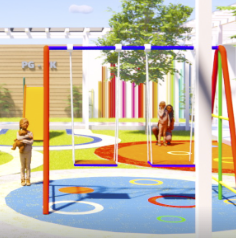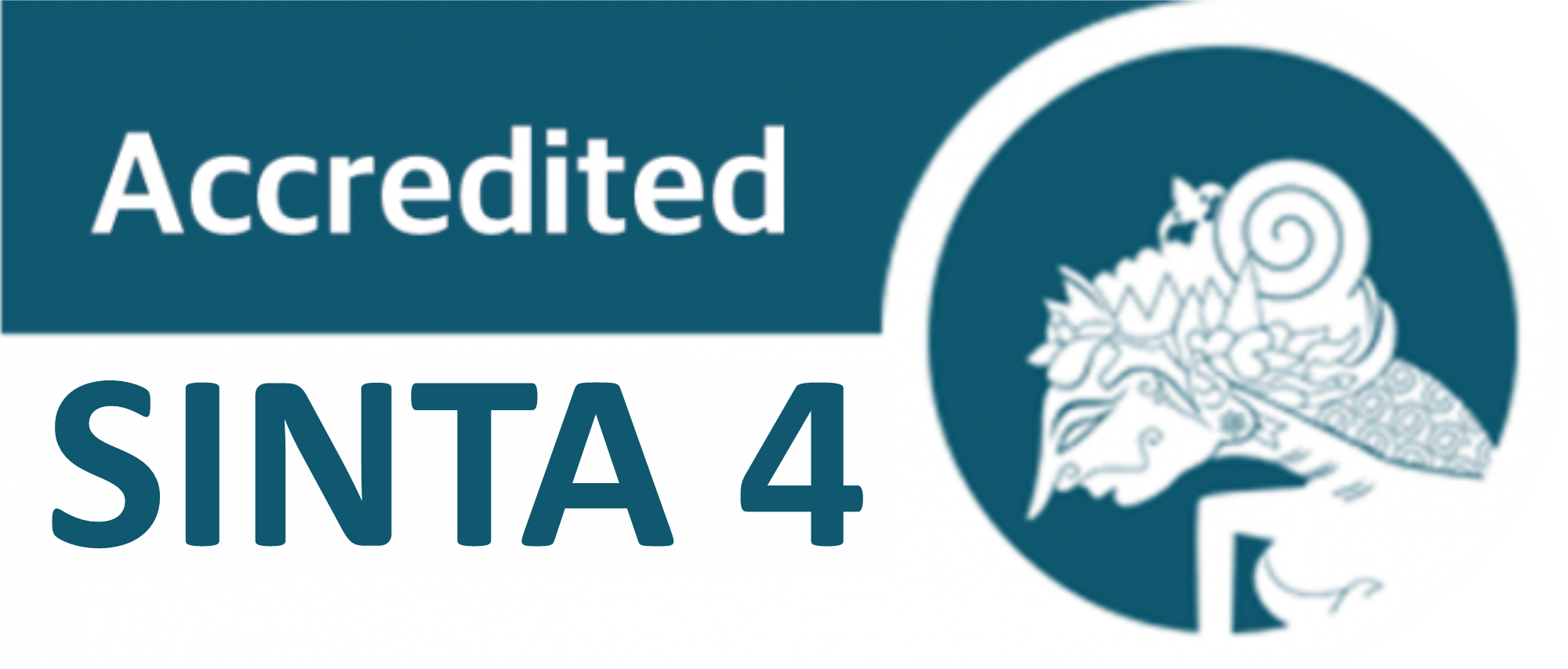
ANALYSIS OF ADAPTIVE REUSE BUILDING FOR EARLY CHILDHOOD SCHOOL: OPTIMIZING INTERIOR DESIGN FOR CHILD DEVELOPMENT
Abstract
The conversion of unused or abandoned buildings into educational facilities, known as adaptive reuse, is a common practice in school construction. The process involves transforming old buildings to meet new educational needs. While adaptive reuse is considered an innovative and sustainable solution, research shows that this approach often does not support optimal child development. This research explores the application of educational principles in the context of adaptive reuse with a focus on creating learning spaces suitable for early childhood education. The method used involved a qualitative approach with an open-ended questionnaire administered to school principals, teachers, staff and parents. The questionnaire was designed to elicit understanding and perceptions of how interior design can support children's physical, emotional and social development. The novelty of this study lies in the integration of interior design principles specific to early childhood education in the context of adaptive reuse. Different from previous studies that focus on structural or functional aspects, this research offers practical guidance to transform old buildings into learning spaces that support various aspects of children's growth. The results reveal that adaptive reuse applications often do not fulfill all important aspects of designing learning environments. Key issues identified include limitations in creating spaces that support children's creativity, safety, comfort and social interaction. This research emphasizes the need for a more integrated and developmentally-focused design approach to ensure that the resulting learning spaces truly support various aspects of children's growth and learning.
KEYWORDS
Adaptive reuse, Building, Early childhood education, Interior design, Sustainability, Child creativity, Social interaction
AUTHORS
Nury Tanzillah : Institut Teknologi Bandung
Kharista Astrini Sakya : Institut Teknologi Bandung
REFERENCES
Alfina, A., & Anwar, R. N. (2020). Manajemen Sekolah Ramah Anak Paud Inklusi. Al-Tanzim: Jurnal Manajemen Pendidikan Islam, 4(1)., https://doi.org/10.33650/al-tanzim.v4i1.975, 36-47.
Budiharjo. (2017). The Importance of Early Childhood Education and Development in Indonesia . International Journal of Multimedia and Ubiquitous Engineering, 12(4), http://dx.doi.org/10.14257/ijmue.2017.12.4.12, 141-148.
Fardlillah, Q., & Suryono, Y. (2018). Key Principles and Elements in Early Childhood Education Classroom Design. Advances in Social Science, Education and Humanities Research, https://doi.org/10.2991/icsie-18.2019.23, 120-127.
Giljahn, J. &. (1981). Guide for the Adaptive reuse of Surplus Schools. Columbus Landmarks Foundation, OH.
Graves, B. E. (1993). Brief History of School Design (Chap. 2). In School Ways: The Planning and Design of America's Schools . New York: Architectural Record, McGraw-Hill, Inc.: (Ed. C. A. Pearson).
Hadi, C. (2024, April 1). Focus Group Discussion Adaptive Reuse for Early Childhood Schools.
Hadinanti, H., & Ramadhan, M. S. . (2024). The development of block printing techniques inspired by Art Deco ornaments in the interior of Savoy Homann Hotel. Gorga: Jurnal Seni Rupa, 13(1), https://doi.org/10.1234/gorga.v13i1.6789, 45-60.
Halim, W. K. (2023). Gorga: Jurnal Seni Rupa, 12(01), https://doi.org/10.1234/gorga.2023.01201. Perancangan bangunan modular penunjang green economy untuk hunian resiliensi bencan, 1-14.
John W. Creswell, C. N. (2016). Choosing Among Five Approaches: A Guide to Qualitative Inquiry and Research Design. London, United Kingdom: SAGE Publications.
Kurniyawan, M. D. (2020). Manajemen Sekolah Ramah Anak. Jurnal Administrasi dan Manajemen Pendidikan, 3(2). http://dx.doi.org/10.17977/um027v3i22020p192, 192-198.
Mariyana, R. (2010). Management of the Learning Environment. Kencana Prenada Media Grup.
Mumtaz, F. (2023, April 1). Focus Group Discussion on interior design for early childhood schools.
Newton, C. W. (2009). Educational Buildings as 3D Text Books: Linking Ecological Sustainability, Pedagogy and Space. Open House International, 34(1), 17-25.
Qonita, F & Yoyon, S. (2018). Classroom Physical Environment: Core Principles and Design Elements in Early Childhood Education. International Conference on Special and Inclusive Education , (ICSIE 2018), Proceedings published in Advances in Social Science, Education, and Humanities Research, Vol. 296.
Rajput, S. (2023). Adaptive reuse of Havelis. International Journal of Scientific Research in Engineering and Management (IJSREM), https://doi.org/10.55041/IJSREM18720, 07(04), pp. 1.
Regulation of the Minister of Women's Empowerment and Child Protection. (2014). Number 8 of 2014 on Child Friendly School Policy Ministry of Women's Empowerment and Child Protection. Jakarta.
Spector, S. (2023). Revitalizing Communities and Schools: The Role of Adaptive Reuse. 090 Vermont Ave., NW #700, Washington, DC 20005-4905.: The National Clearinghouse for Educational Facilities.
Wahdah, M., & Mujiwati, Y. (2020). Program Sekolah Ramah Anak telah diimplementasikan sebagai strategi efektif untuk mengurangi kekerasan di lingkungan sekolah. Jurnal Pendidikan Edutama, 7(1). https://doi.org/10.30734/jpe.v7i1.598, 143-150.
Widera, B. (2012). Education Towards an Environmentally Responsible Future: Low Energy and Passive Architecture for Schools and Kindergartens. In PLEA2012 - 28th Conference, Opportunities, Limits & Needs Towards an environmentally responsible architecture. Lima, Peru, 1-10.
Yusuff, A. A. (2024). Concept formulation in the process of designing interior residential. Gorga: Jurnal Seni Rupa, 13(1), https://doi.org/10.1234/gorga.v13i1.5678, 1-15.
Zurita, V. (2008). Exploring Whole School Sustainability: Perspectives from Schools in London. London: Government Office.
Keywords
Full Text:
PDFDOI: https://doi.org/10.24114/gr.v13i2.62371
Article Metrics
Abstract view : 53 timesPDF - 8 times
Copyright (c) 2024 Nury Tanzillah, Kharista Astrini Sakya

This work is licensed under a Creative Commons Attribution-ShareAlike 4.0 International License.
![]()
![]()
![]()
Gorga : Jurnal Seni Rupa
Email: gorgajurnalsenirupa@unimed.ac.id
Jl. Willem Iskandar, Pasar V, Medan Estate, Medan City, North Sumatra Province, Postal Code 20221. Phone/fax: (061) 661 3365 / +6285278021981.
This work is licensed under a Creative Commons Attribution-ShareAlike 4.0 International License







